There can be your advertisement
300x150
Wooden Ceilings in Interior Design
Wood belongs to the category of materials that have been tested over centuries: houses were built from it, and it is actively used for finishing
Today, it is quite natural for many people to see wooden floors and the same panels on walls. But surfaces are often covered with suspended structures or stretched canvases. And that's a pity! A well-finished wooden ceiling looks beautiful and stylish.
Features of Wooden Ceilings
First of all, it should be noted that this material is safe in terms of ecology. There are no formaldehyde resins, adhesive compositions, phenol and other substances harmful to health in boards and panels. Moreover: some species of forest giants (for example, larch) emit a special aroma that positively affects human well-being. Natural wood is easy to process, it is durable, and can be renewed by sanding in case of contamination. And another plus, relevant for urban apartments – excellent thermal and sound insulation.

Design by Olga Borovikova and Irina Nikolaeva
Types of Wooden Ceilings
Modern technologies allow making ceilings not only in the form of traditional planks. There are other options, which are described below.
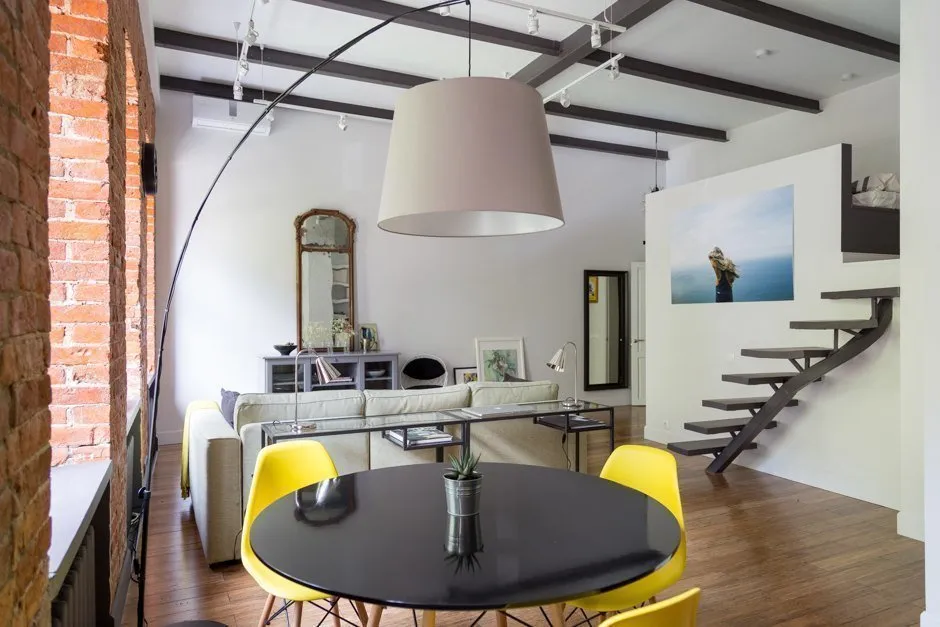
Design by studio "SPACE FOR LIFE"
Ceiling from Plank
This material consists of trimmed planks, well planed, sanded and provided with a groove on one side and a tongue on the other. Such a structure facilitates installation of plank and makes the entire surface monolithic. Planks are usually made from pine, ash, oak, larch, or birch or larch (these trees do not release resin when heated) for use in saunas. When installing a ceiling, it is advisable to treat the material with special impregnation that preserves its natural color for a long time.
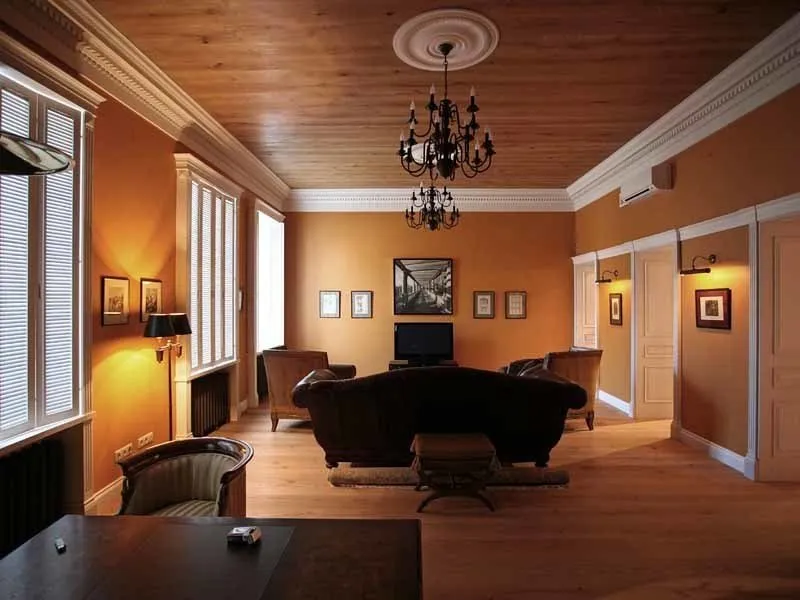
Wooden Panels
They are usually made from valuable wood species. The manufacturing process involves forming two (rarely three) layers. The main layer is made from less valuable wood: pine or spruce, or particle board, while the outer surface is made of more expensive material. Bonding occurs under high temperature and pressure conditions. As a result, a strong and attractive panel is obtained. The main advantages of this material include:
- strength;
- durability;
- attractive appearance;
- ease of installation.

Cladding Panels
These are also made from valuable wood species. However, the panels are solid rather than composite like wooden panels. The range of this material is quite wide, but the most popular products are those impregnated with wax. This treatment makes panels resistant to dirt and moisture, allowing their use in ceilings not only in living rooms but also in bathrooms and kitchens.
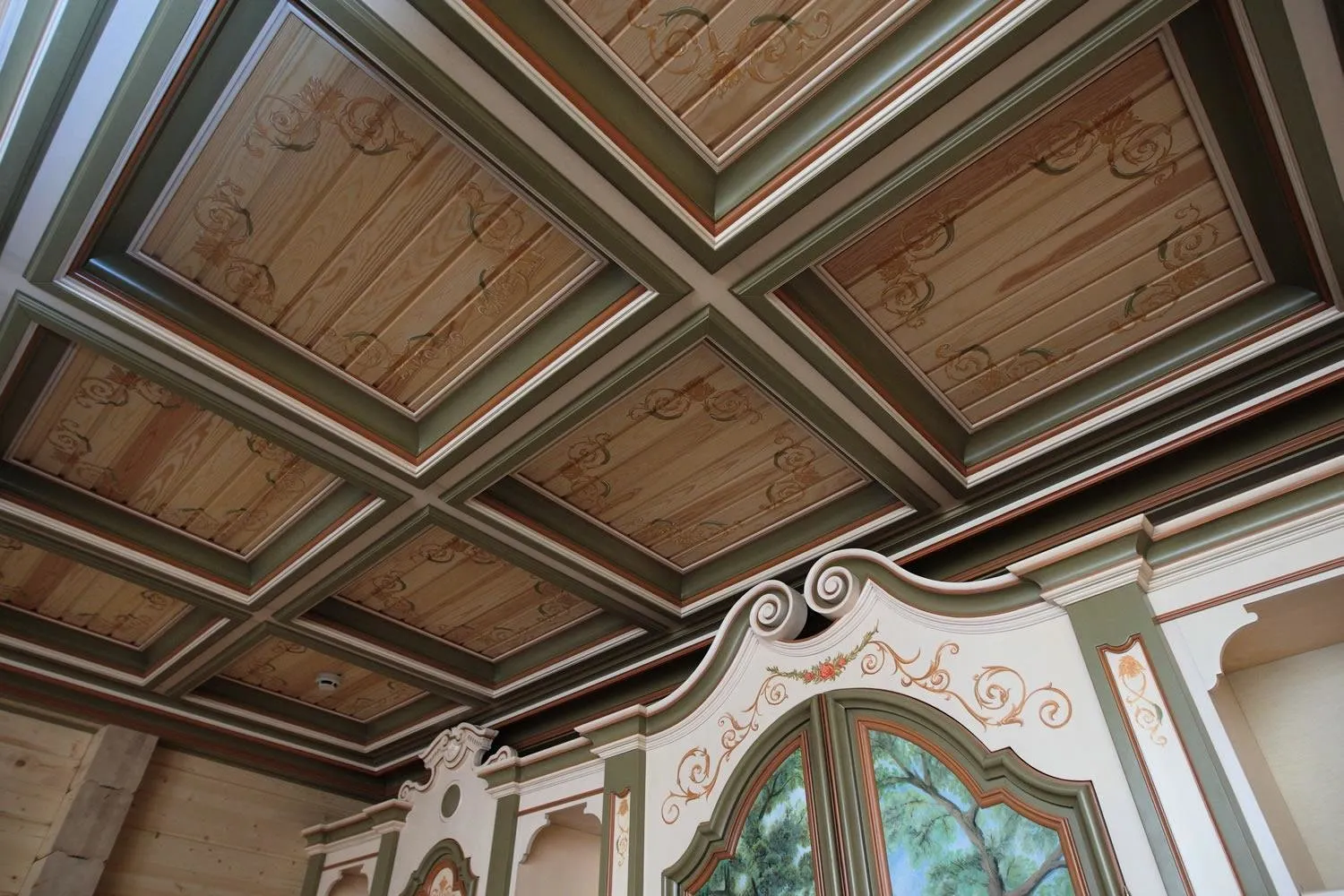
Using Plywood for Ceiling Installation
The material is characterized by high strength and a long service life. Plywood is easy to process, it can be painted. If the material requires resistance to moisture, it is impregnated with special solutions. Their use also adds additional stiffness to the plywood.

Wooden Wallpapers
A very interesting and innovative finishing material that combines the advantages of regular wallpapers and panels. Wooden wallpapers are made from cork or veneer. In the latter case, a sheet (less often roll) material is obtained with high resistance to odors, dirt and sound penetration. Wallpapers made from veneer use valuable wood species, which are glued onto ordinary paper wallpapers during the manufacturing process.
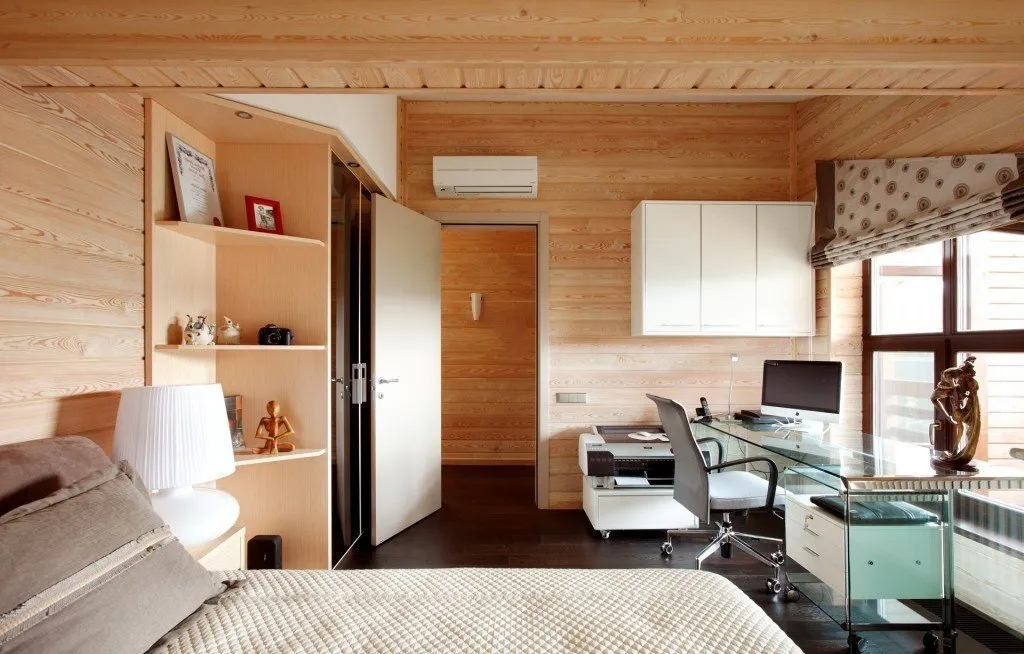
Suspended and Covered Wooden Ceilings
What is the difference between them? Suspended structures are fixed to a "black" ceiling or joists using special metal elements. As a result, an empty space is created where electrical wiring and/or other communication systems can be installed. The disadvantage of suspended structures is the loss of ceiling height.
Covered ceilings are installed differently. Here, the profile is fixed directly to the slab, i.e., the gap between the base and the covering structure is minimal. This allows the ceiling height to remain almost unchanged. The free space thus created can only accommodate electrical or telephone cables; running pipes or ventilation ducts is not possible. Other features of covered ceilings:
- the presence of an air gap promotes good thermal insulation;
- sounds coming from above only intensify, so in urban apartments where neighbors live upstairs, it is better to avoid such structures and opt for a suspended system.
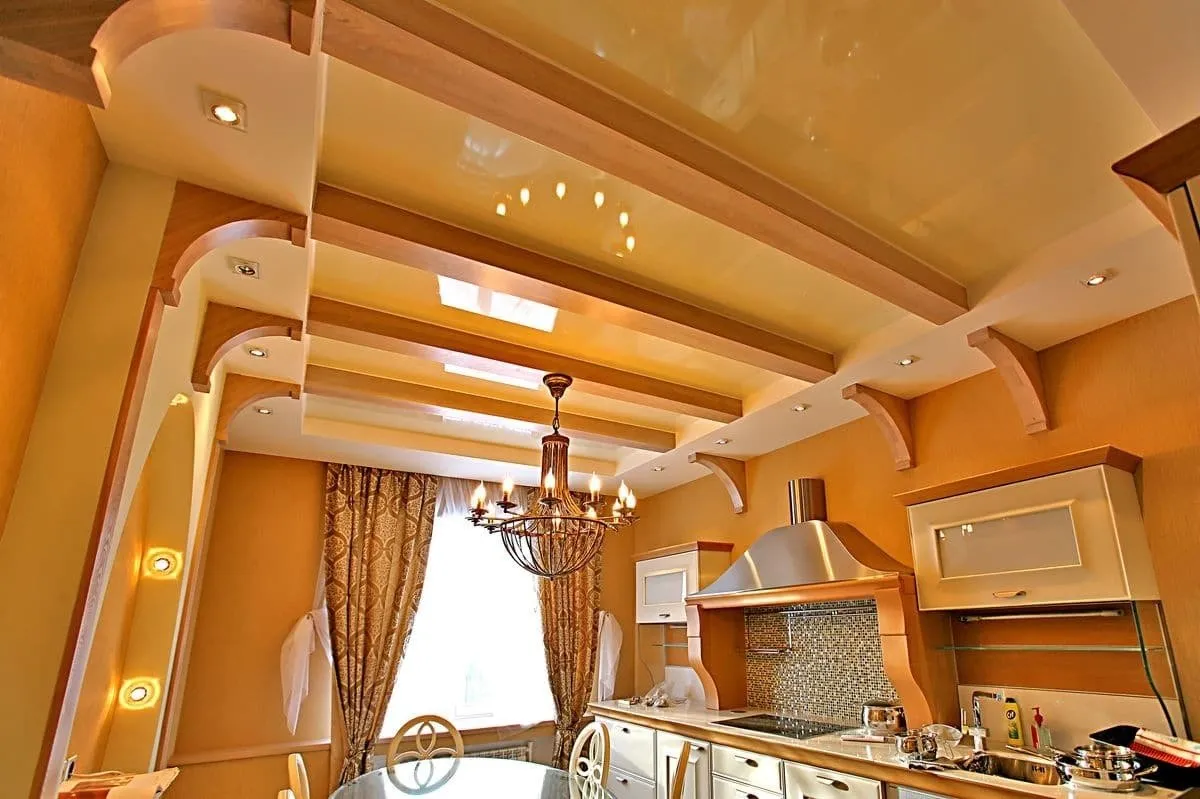
Light and Dark Wooden Ceilings
When choosing the type of wood or processing it, keep in mind that dark tones visually narrow the space. Therefore, a dark ceiling will suit a spacious room with good lighting. Light wood species have no complaints: they can be used in rooms of any size. A light surface will only expand a small room. Combined solutions attract attention. These involve designers mixing dark and light tones. However, such "experiments" are better suited for large spaces.

Interior Styles and Wooden Ceilings
Naturalness and attractiveness of wood, associated with its unique texture, allow using this material in various interior styles. Which ones?
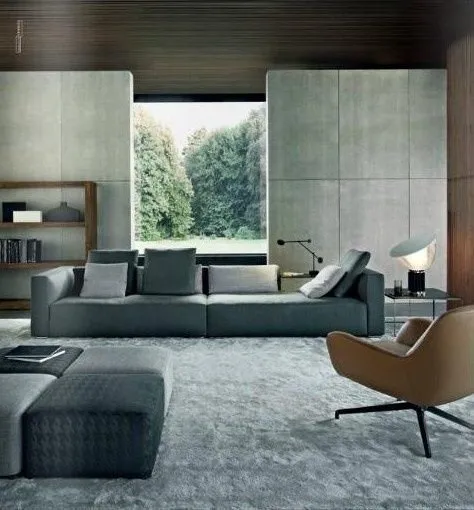
Country Style
It is quite difficult to imagine this interior style without wooden surfaces. Therefore, a wooden ceiling here will be very appropriate. Simplicity and traditions are the motto of country style. The greatest effect, highlighting this interior, will be achieved with an uneven, deliberately rough ceiling in combination with wooden columns and beams. If you prefer a smooth surface, then panels or wooden wallpapers will be suitable.

Modern Style
One of the features of this style is the harmonious combination of different finishing materials, both artificial and natural. Here, a wooden ceiling in combination with walls, for example, made of MDF panels or timber, will be quite appropriate. To emphasize modernity, various structures can be installed on the ceiling surface. These can include original grilles to which lighting fixtures are attached.
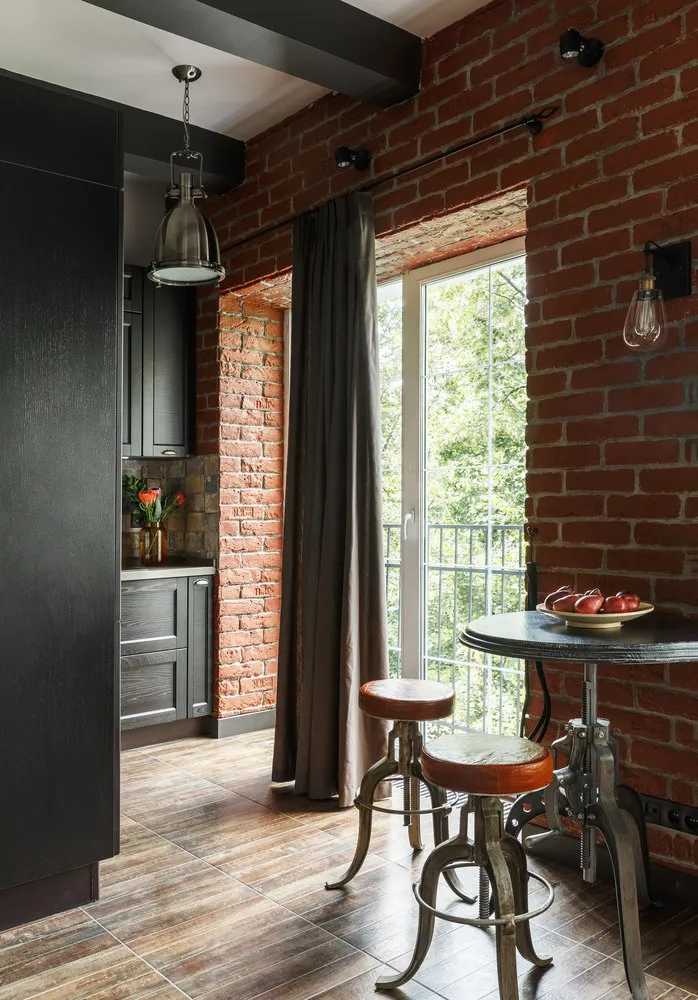
Design by Marina Sarkisyan
Shale Style
This style implies a spacious room with wooden and stone interior details. The colors used, including for the ceiling, are dark green, dark beige or burgundy. Using brighter colors is undesirable because "shale" implies natural tones.
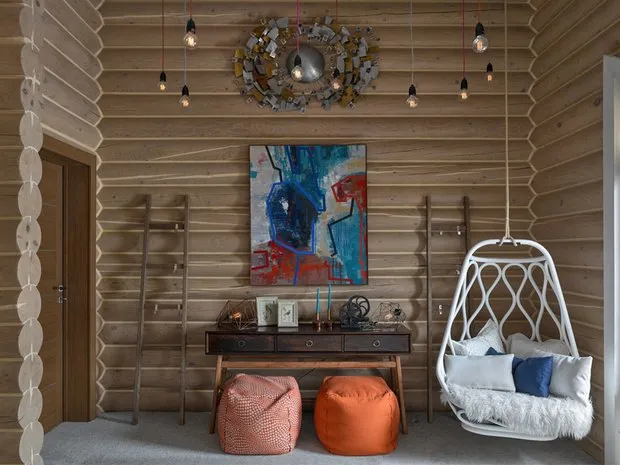
Eco Style
The name of the style itself indicates the need to use natural materials. It is important to highlight the natural origin of wood, i.e., emphasize its texture. It is recommended to use special colorless impregnations that preserve the original look of the material and extend its service life.

Japanese Style
Exotic styles are also becoming popular in Russia. The basis of this style is the use of wood and stone. The ceiling is decorated in dark tones. In this case, suspended structures with a combined color solution look good. Don't forget about the traditional red color for Japanese people – it can be used for accent elements. As for the room and its furnishings, minimalism is expected in this style.

Traditional Style
This style implies a ceiling that corresponds to a rough interior, where wooden finishing materials and furniture predominate. Planks on the ceiling can be artificially aged – special compositions are available for sale. As a complement, use ceiling beams: if they don't exist, then a polyurethane or gypsum board imitation will do.
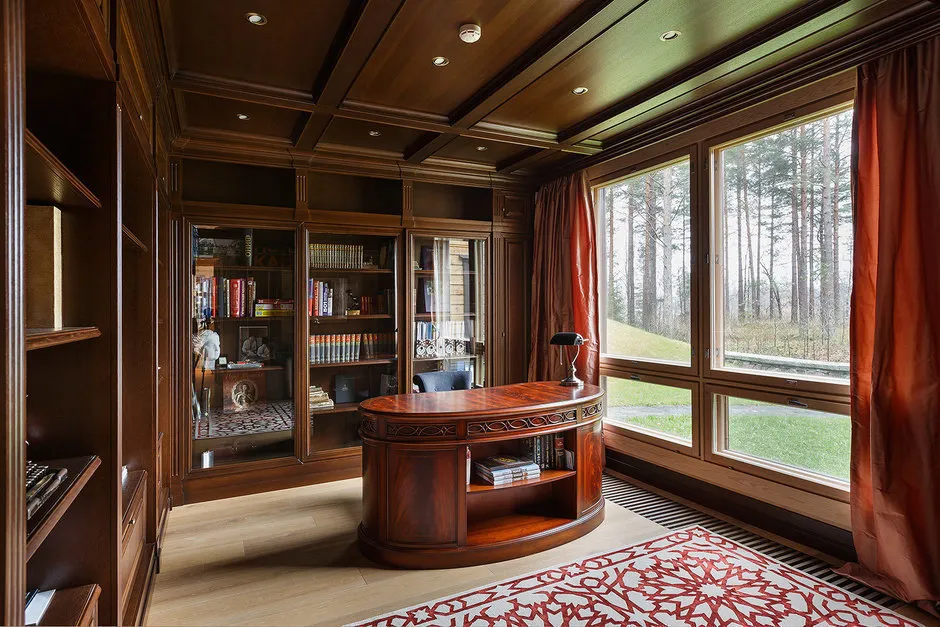
Design by Maria Ivanova
Carved Wooden Ceiling
A luxurious and complex variant of finishing. The role of artistic images can be played by compositions of flowers, patterns or even futuristic motifs. There are also simpler options – for example, cutting geometric shapes. In any case, all work is done below, where the composition is created, and then the finished material is mounted on the main ceiling.
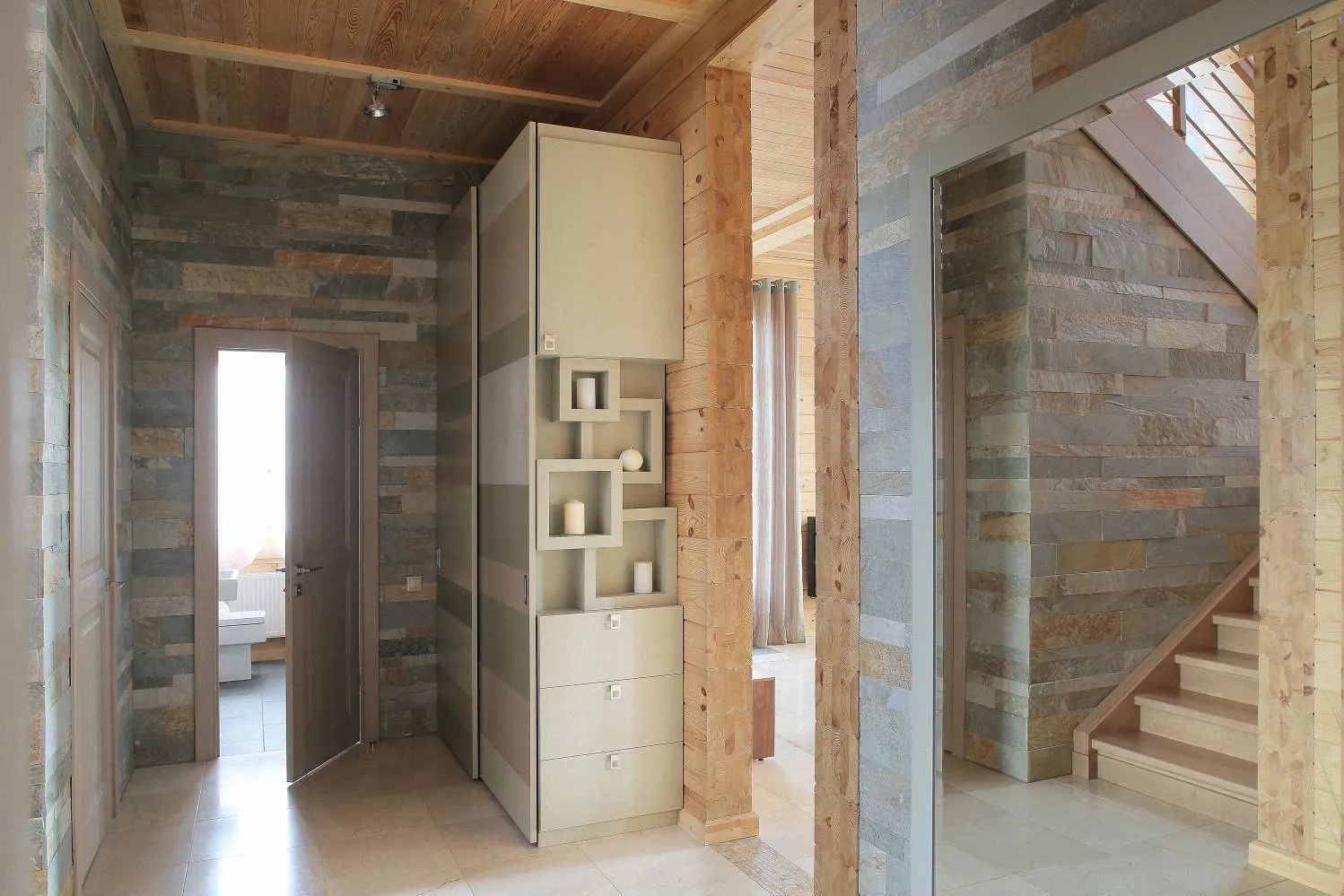
Painting a Wooden Ceiling
Traditionally, white paint is used: it visually makes the room more spacious and brighter, which is important for small living spaces. Using other shades is directly related to the interior style. In most cases, white paint is mixed with a colorant to achieve the desired shade. Wooden ceilings should be painted in 2, sometimes 3 layers.
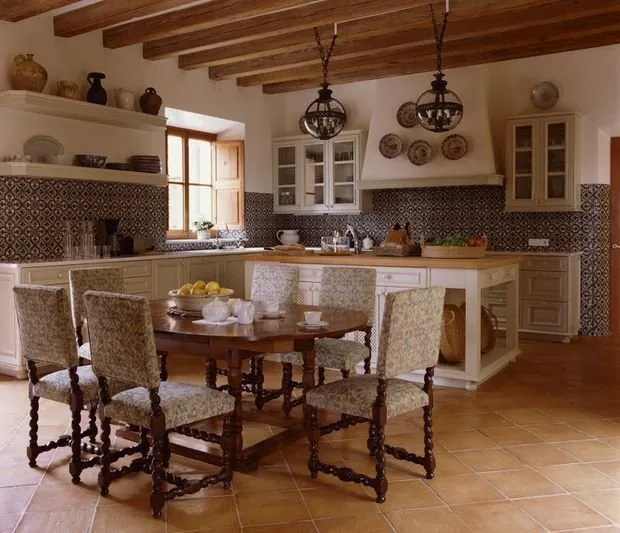
Stretch Ceilings in Wood Style
An original and interesting structure that exactly imitates various types of wood. Unlike natural ceiling, stretch ceiling does not require any processing or painting and is not afraid of moisture. Another important advantage – the impossibility of microorganism development on the canvas surface. Stretch ceiling imitating wood is a ready-made system installed on a rough base in just a few hours.
The modern market offers a large variety of finishing materials where wood occupies a far from last place. Due to its natural origin, wooden ceilings do not go out of fashion and continue to delight owners of living spaces with the diversity of decoration and ecological safety
More articles:
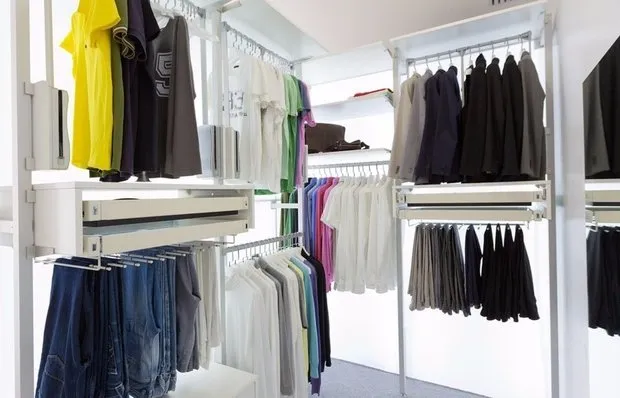 Design of Storage Room in Apartment
Design of Storage Room in Apartment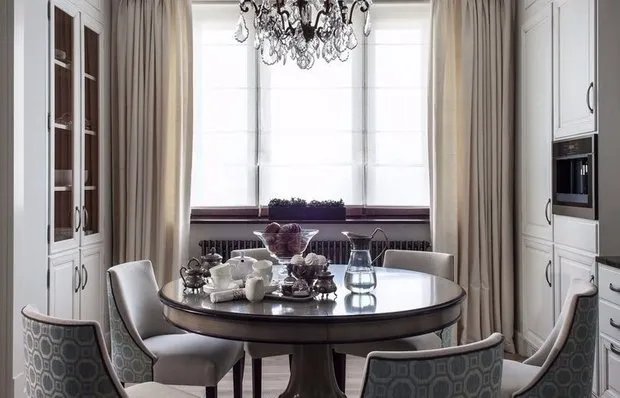 Dining Area on the Kitchen
Dining Area on the Kitchen What We Read in September: 10 Posts That Became Hits
What We Read in September: 10 Posts That Became Hits Editor's Choice: Furniture and Decor for Children's Room
Editor's Choice: Furniture and Decor for Children's Room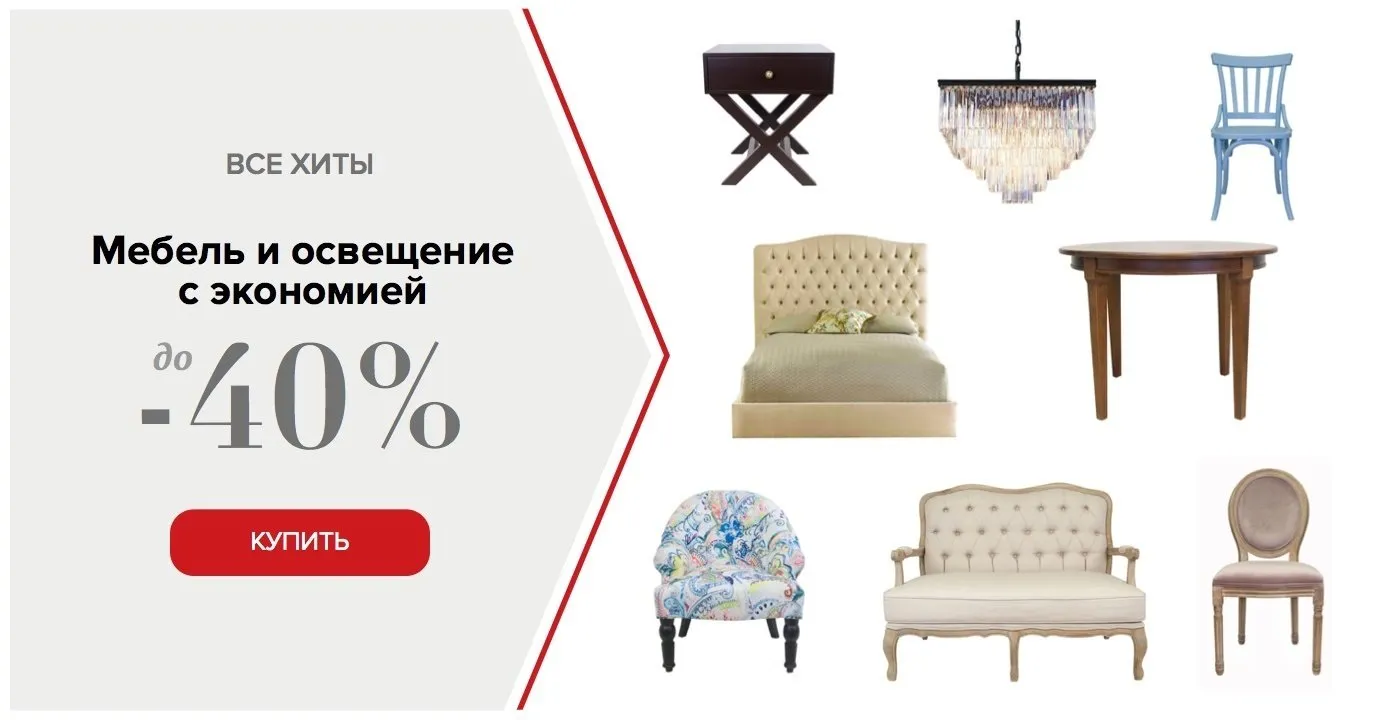 Stylish Design + Good Discounts: 7 October Promotions
Stylish Design + Good Discounts: 7 October Promotions Internal Fill of Wardrobe Closet, Photo Examples of Design
Internal Fill of Wardrobe Closet, Photo Examples of Design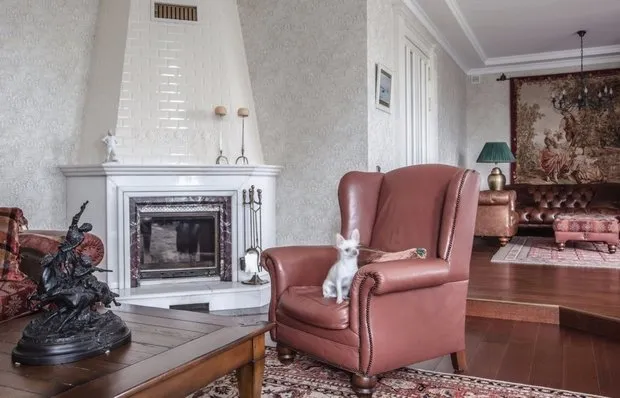 Interior in English Style
Interior in English Style 3 New Ways to Decorate Interior with Plants
3 New Ways to Decorate Interior with Plants